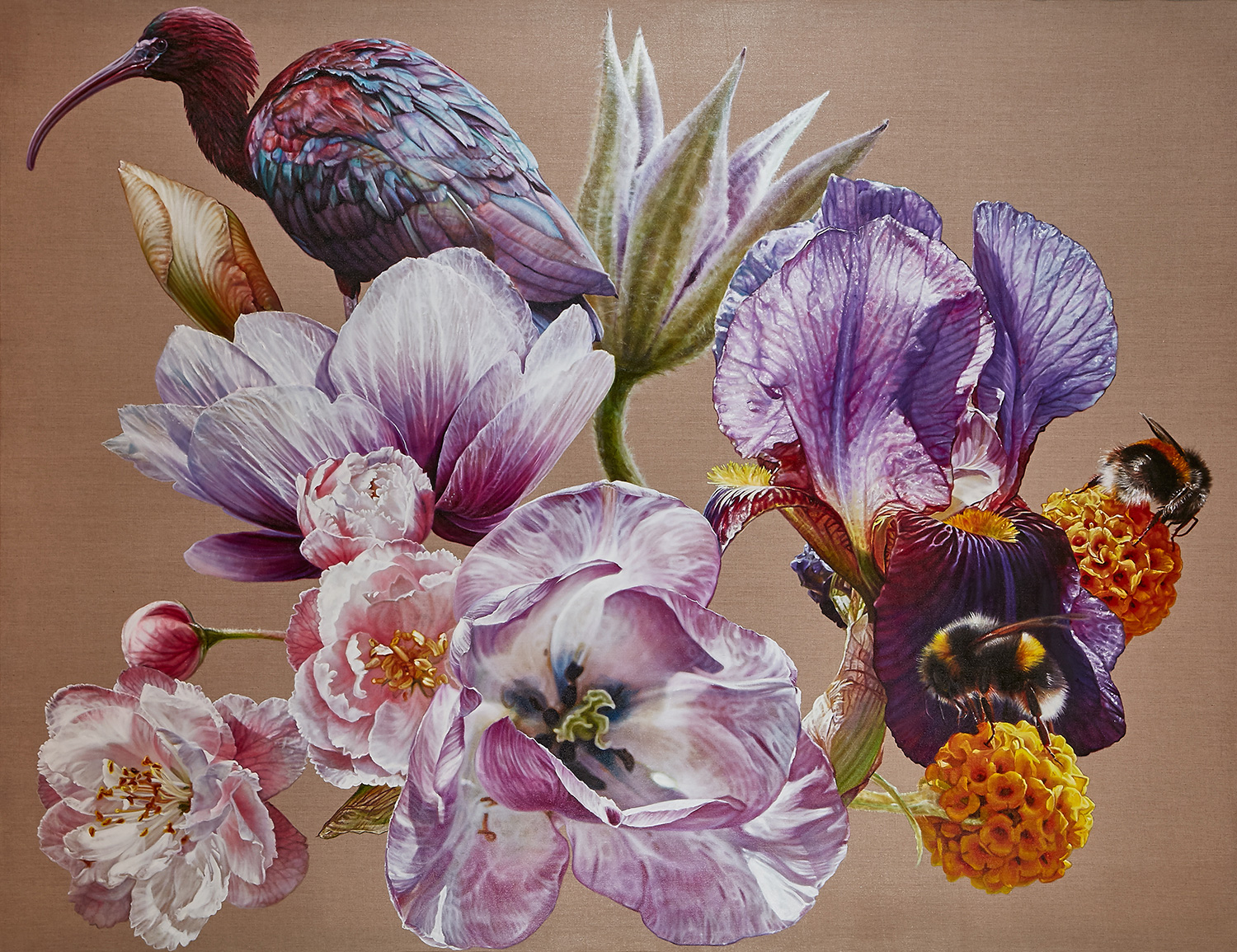Plegadis falcinellus – Herald of the Flood, and Healer of the Sacred Eye, 2016, oil on linen, 192 x 252cm, SOLD
The ibis symbolises mysticism, wisdom, and the ability to work magic. This painting inspires us to source magic in our lives.
In ancient Egypt, the ibis on a perch formed the hieroglyphic for the god Thoth – the deity recognised for bestowing all arts and sciences. Thoth was lord of the divine word, the god of the moon and wisdom. With the head of an ibis, and the body of a man, Thoth provided a link to the divine.
The ibis in its natural habitat as a wading bird, is symbolic of this link:
Its feet are firmly planted in the earth – rooted to the underworld. The ancient Egyptians associated the unseen mysteries of the underworld with the twilight realm of our spiritual respite between incarnations.
Its legs occupy the element of water, representing the subconscious – the birthplace of intuition and feelings.
Its head occupies the higher realm of air – our thoughts, the superconscious and the heavenly.
On the earthly plane the ibis heralded the annual flood in ancient Egypt, which marked the changing of the seasons. It invoked magic in its true original sense, fostering an understanding not only of the physical movements of the universe and the cycles of time, but also the secret and sacred. Like Thoth, the ibis could manoeuvre freely and unimpeded throughout all the realms of creation – earth, water and air – linking the underworld, our earthly experience, and the heavenly realm.
The ibis invites us to take a dip in the stream of our consciousness.
Sadly, the ibis is now extinct throughout Egypt because of gradual aridification resulting from swamp drainage and land reclamation.
